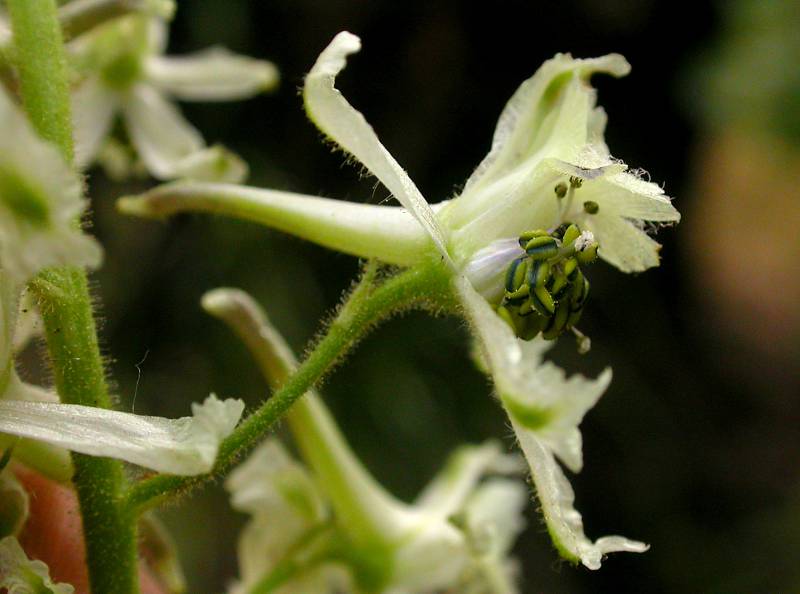Delphinium xantholeucum
Delphinium bicolor
yellow-white larkspur
Leaves few, glabrous and glaucous, mostly on the lower 1/5 of the stem;
leaf blades 2-7 cm. broad, 3-4 times dissected, the ultimate segments linear, 1-2 mm. broad.
Leaves few, long-petiolate, mostly basal, the blades 2-6 cm. broad, 2-4 times parted or lobed into linear or oblong-lanceolate segments 1.5-5 mm. broad;
cauline leaves much reduced upward.
Inflorescence compound, the main raceme as long as the rest of the stem, loosely many-flowered;
pedicels elongate, spreading;
sepals 5, creamy-white to greenish-white, green-tipped, the lateral pair oblong, about 10 mm. long;
spur 12-15 mm. long;
petals 4, small, creamy-yellow;
stamens numerous;
pistils 3.
Inflorescence simple or compound, the racemes 3-15 flowered; the lower pedicels several times as long as the flowers, spreading or ascending;
sepals 5, deep purplish-blue, widely spreading, 17-25 mm. long, the lower pair the largest; the spur 13-20 mm. long, from about as long to twice as long as the top sepal;
petals 4, small, the lower pair sometimes brownish or yellow-purplish, or all deep purplish-blue, the blade 3-4 mm. long, deeply bi-lobed;
stamens numerous;
pistils 3.
Follicles 15-22 mm. long, erect, glabrous to glandular-pubescent.
Follicles 15-22 mm. long, somewhat spreading.
Specimen records from west of the Cascade Mountains need to be re-examined.



